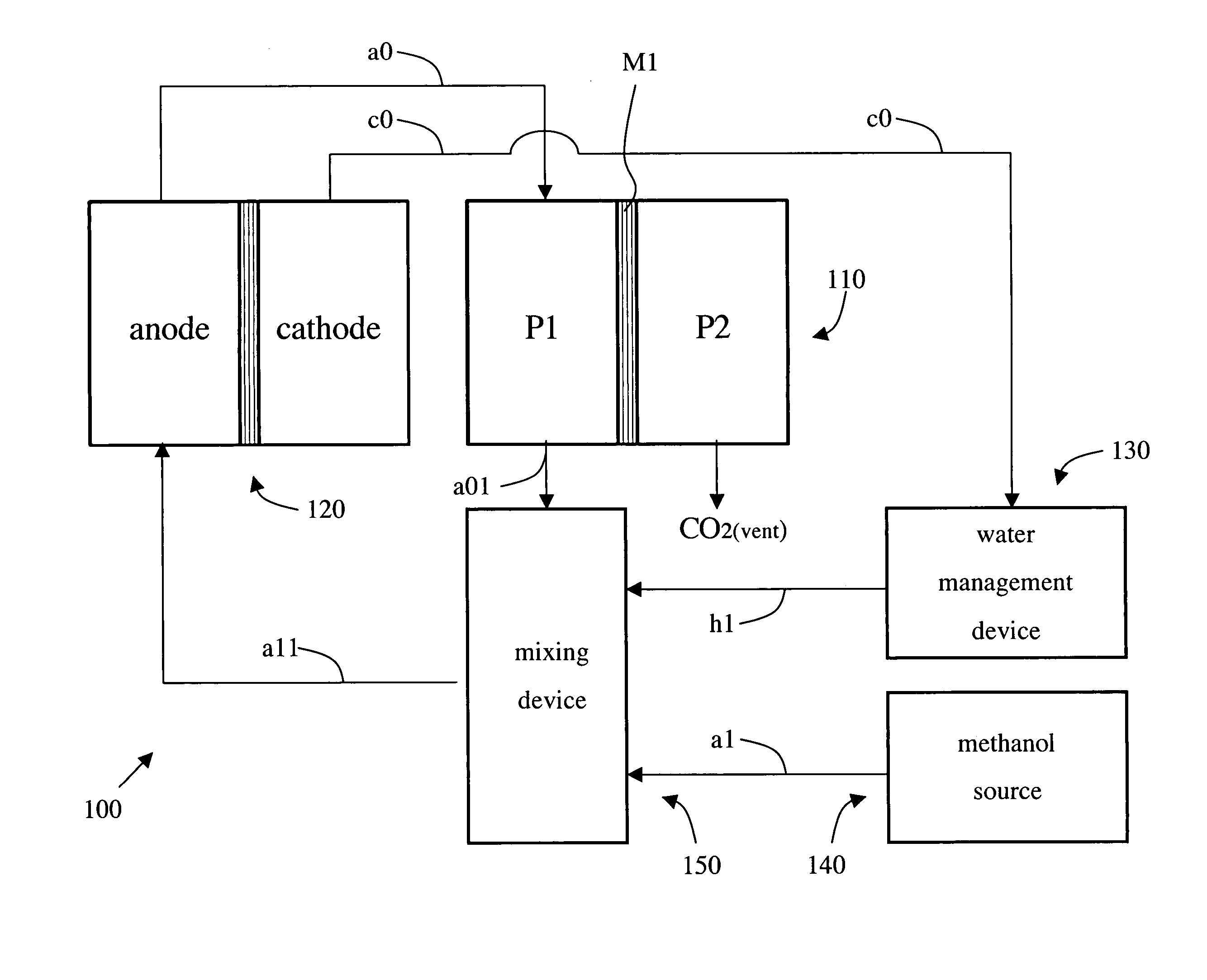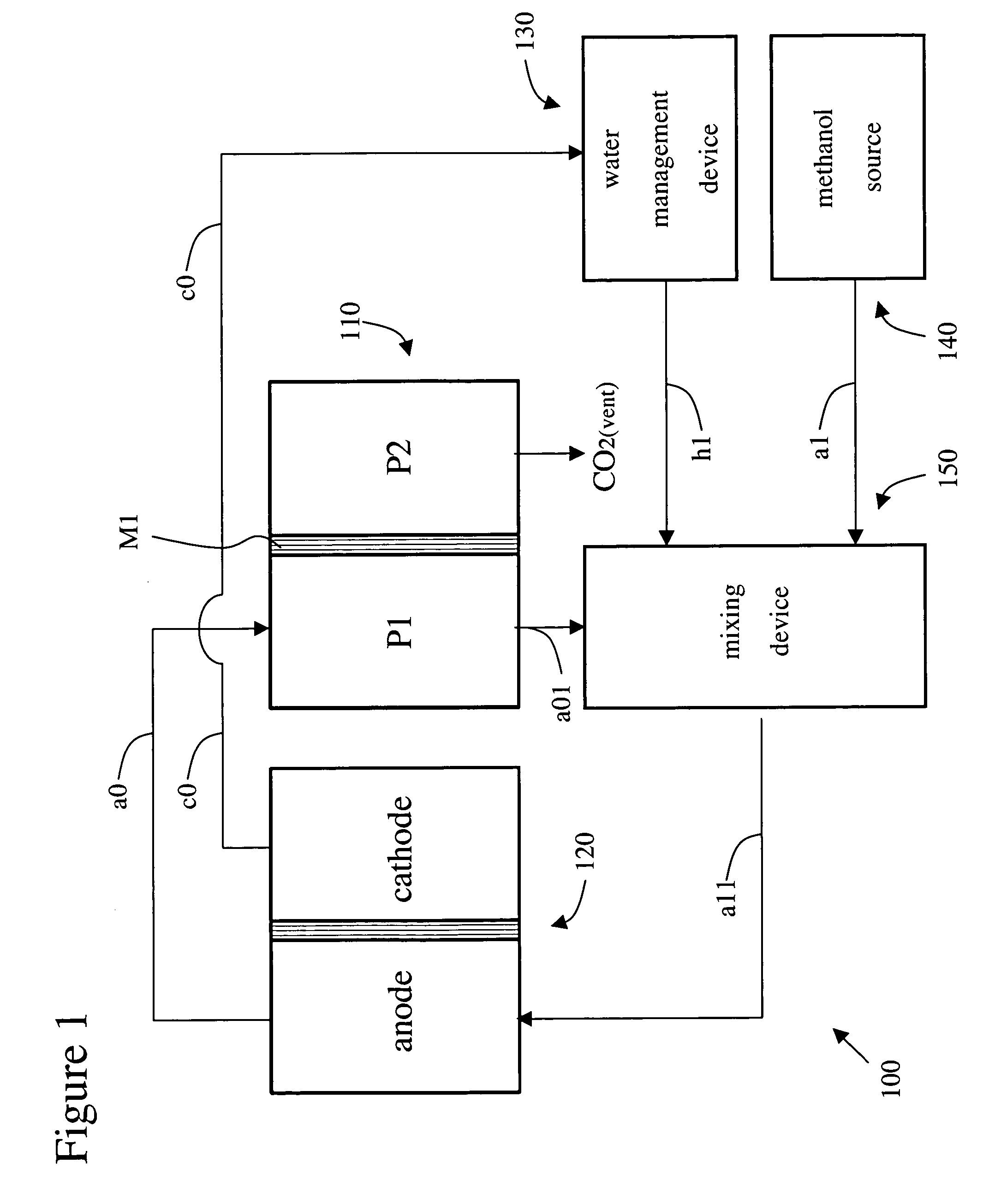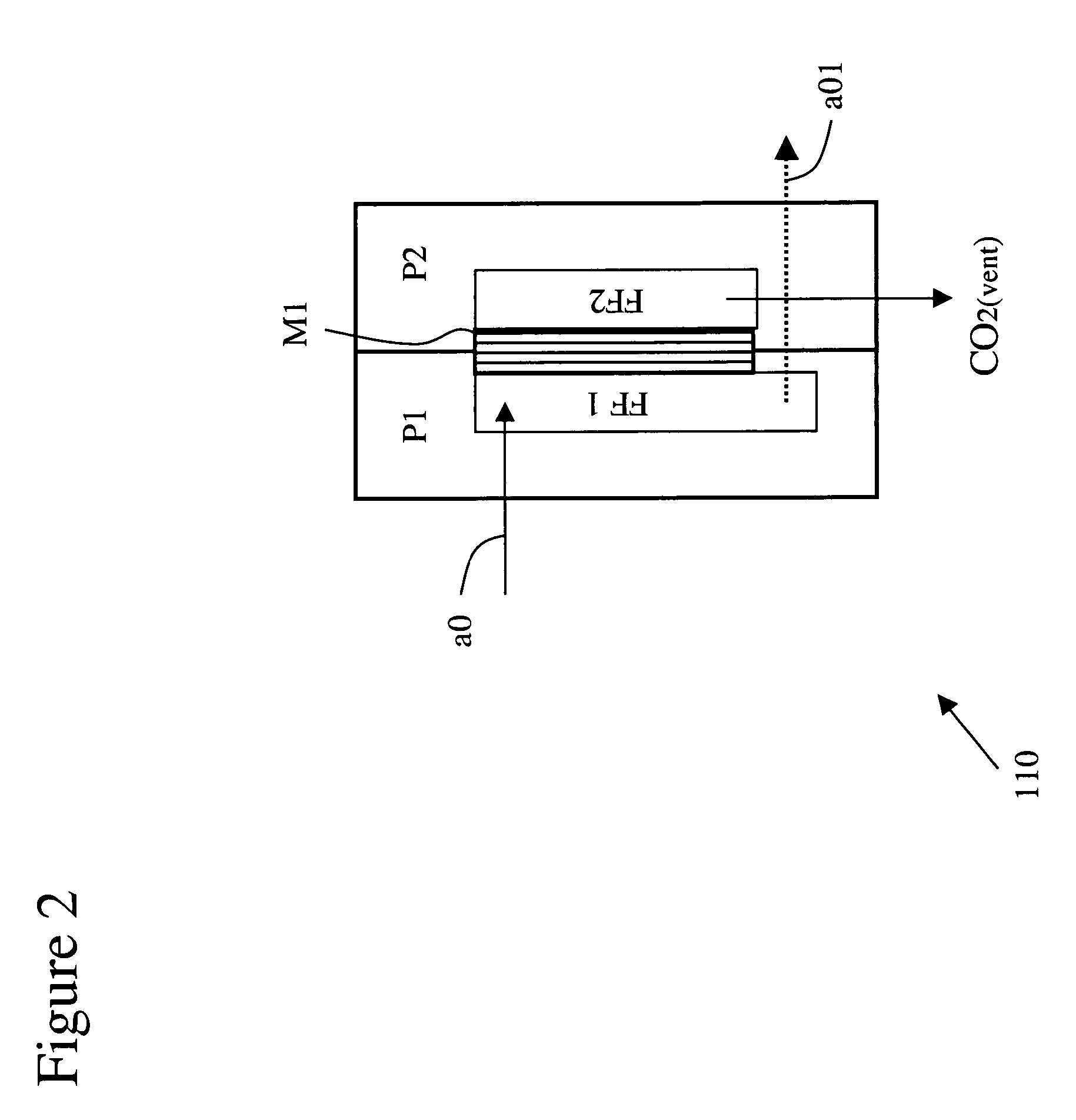Carbon dioxide management in a direct methanol fuel cell system
a technology of methanol fuel cell and carbon dioxide, which is applied in the direction of cell components, cell component details, separation processes, etc., can solve the problems of power consumption, inefficiency, and bulky equipment, and achieve the effect of improving the overall efficiency of the dmfc system, avoiding bulky and power-consuming devices, and small in siz
- Summary
- Abstract
- Description
- Claims
- Application Information
AI Technical Summary
Benefits of technology
Problems solved by technology
Method used
Image
Examples
example 1
[0028]FIGS. 4–5 show an example of an approach for implementing the critical functions of water recovery from the cathode exhaust, carbon dioxide separation from the anode output stream, dilution of incoming concentrated methanol and thermal management in a direct methanol fuel cell. The individual components or modules are described without a particular preference in order. In addition, the description of the carbon dioxide separation device / module is not repeated infra and readers are referred to the description supra.
1.1 Air Supply
[0029]An air supply subsystem is added to provide the oxygen c11 to the cathode(s) to satisfy the electrochemical demand in a direct methanol fuel cell stack. The stack has an oxygen requirement in addition to the oxygen consumed by the electrochemical current producing reaction. Methanol being a small, completely water miscible molecule has a tendency to migrate from the anode side (fuel side) over to the cathode side (air side) of the cells. This cros...
example 2
[0055]FIGS. 6–7 show another example of an approach for implementing the critical functions of water recovery from the cathode exhaust, carbon dioxide separation from the anode output stream, dilution of incoming concentrated methanol and thermal management in a direct methanol fuel cell. This example is a variation of example 1 with the difference in the recovery of water related to the water management device / module. For a description of the other components or modules the reader is referred to the description supra.
2.1 Water Management
[0056]In this embodiment, cathode output stream c0 enters the flow field of plate P22 (e.g. through grooves etched or machined on the inside face of plate P22) where c0 is in contact with membrane M3. Membrane M3 performs two functions namely:[0057](i) Membrane M3 is a selective permeable membrane that permits only air to pass through it and restricts the transport of any water vapor or liquid water through it (this in contrast to membrane M2 descri...
example 3
[0075]FIGS. 8–9 show yet another example of an approach for implementing the critical functions of water recovery from the cathode exhaust, carbon dioxide separation from the anode output stream, dilution of incoming concentrated methanol and thermal management in a direct methanol fuel cell. This example incorporates aspects of examples 1 and 2. In addition, other variations are added that are described infra. For a description of the other components or modules the reader is referred to the description supra.
3.1 Variations
[0076]A first variation relates to the carbon dioxide separation module, which could be stacked with plate P31 that serves as a (passive) mixing device in a similar fashion as in example 1 and 2. In addition, at either side of this compact multi-functional module of plates P11, P12 and P31 thermal insulators TIs could be added to prevent heat loss through radiation from stream a01.
[0077]A second variation relates to the water management employing both solutions f...
PUM
| Property | Measurement | Unit |
|---|---|---|
| temperature | aaaaa | aaaaa |
| pressure | aaaaa | aaaaa |
| volume | aaaaa | aaaaa |
Abstract
Description
Claims
Application Information
 Login to View More
Login to View More - R&D
- Intellectual Property
- Life Sciences
- Materials
- Tech Scout
- Unparalleled Data Quality
- Higher Quality Content
- 60% Fewer Hallucinations
Browse by: Latest US Patents, China's latest patents, Technical Efficacy Thesaurus, Application Domain, Technology Topic, Popular Technical Reports.
© 2025 PatSnap. All rights reserved.Legal|Privacy policy|Modern Slavery Act Transparency Statement|Sitemap|About US| Contact US: help@patsnap.com



